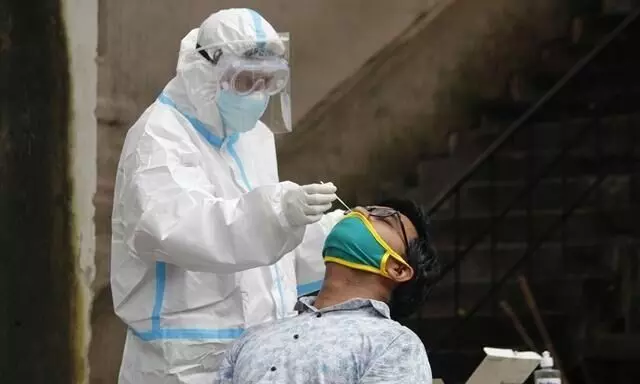
Kerala refurbishes lockdown regulations; lockdowns to be based on WIPR
text_fieldsThiruvananthapuram: The relaxed lockdown restrictions announced by the Kerala government in the state came into effect from Thursday onwards, while the test positivity rate here has stayed above 10 per cent for the last 50 days, and the state is contributing more than 40 per cent of total daily cases in the country, reports The Indian Express.
The government allowed commercial establishments and offices from 7 am to 9 pm, Monday to Saturday. But conditions are applied that individuals, employees of these establishments or outsiders visiting, should have taken at least the first dose of vaccine before two weeks, or RT-PCR negative certificate should be obtained 72 hours earlier. People who were tested positive for the virus two months back are also allowed.
But, as of August 3, only 56% of the eligible population in Kerala (aged above 18) have received at least one vaccine shot.
However, the requirements mentioned above are not necessary for essential activities such as Covid testing, vaccination, medical emergency, purchase of medicine, death of relatives or marriage of close relatives, local travel to catch long route bus (train/flight/ship) and examinations. Also, children do not need these requirements to accompany their parents while going to public places.
Schools and colleges stay shut, but university exams, recruitment exams, sports trials would be allowed. Malls would be opened for online delivery while places of worship could admit a maximum of 40 persons, allowing 25 square feet for each. Public transport can carry full seating capacity, but only 20 persons are permitted at marriages or funerals. Hotels and resorts could operate in a bio-bubble model, ensuring guests are isolated from the outside world.
As per the new rules, lockdown restrictions would be imposed based on WIPR (weekly infection population ratio) rather than TPR (test positivity rate). The new practice will reduce the containment zone area into those local body wards or divisions in contrast to the previous system, in which the whole local body was shut down in need of containment.
In the WIPR monitoring system, the total cases reported in the week multiplied by 1000 is divided by the total population of the panchayat or urban ward. Divisions with a WIPR of more than ten will be imposed with special intensified stringent lockdown restrictions.
In the previous system, TPR in a week was taken as criteria for lockdown among local bodies. Local bodies were categorised according to TPR into A, B, C and D groups. Bodies with TPR above 15% were put into D and completely shut down, while TPR below 5% were placed in the A category where everyday life was allowed. This mechanism incited the general public anger because if 3 or 4 divisions of a local body, with 50 to 60 divisions, reported a high number of covid cases, the whole local body was shut down. Also, some local bodies increased testing to include even the asymptomatic and those coming for vaccination to reduce TPR while the real vulnerable were left undetected.











